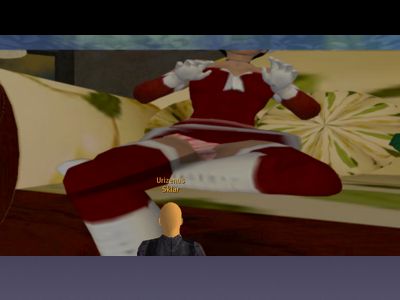
I want to talk about how having separate reach and grasp changed the social norms of Second Life.
There was a fashion – perhaps there still is – for what they called “pussy pants,” texture-mapped clothes to look like genitals, male and female. Without these, your avatar’s legs just meet in the middle with nothing special.
Consider this. In a world where you deliberately wear these sexy pants, and you’ve set the permissions up (or some default has) so your pants are world-readable (readable means that they can be seen by others), and you’re wearing a skirt so that you don’t have to remove clothes for the pants to be readable, and you know cameras belonging to people nearby you can move anywhere… what expectation of privacy do you have there?
There was an up-skirt photography museum in-game; the slide shows one of the least pornographic images. Do people have a right to be upset? It’s the way the the world works!
I’ve heard it put like this. In the physical world, a punch on the nose is a punch on the nose. On the internet, the receiver – the punchee – presses “Okay” first. Can you be offended at spam if you could just filter it, or offended at a weblog if you could killfile it?
A lot of our complaints and confusions about the web come from having a vocabulary which is out of step with the underlying reality. We talk about somebody “viewing” a website, but view is a kind of reach and that never happens online. The view is always logged, always makes an impression in a textfile on the webserver itself. There are two ways to talk to a webserver, one intended just to look, and the other intended to make a change—but they’re both logged. The website has been touched, it has been grasped. The alternative word, to “visit” a website, is much more accurate.
This is why Egan’s probing of the input-output difference isn’t as abstract as it first appears. We’re already encountering difficulties understanding these changes in virtual worlds, and it’s a job for design to find ways to talk about it.